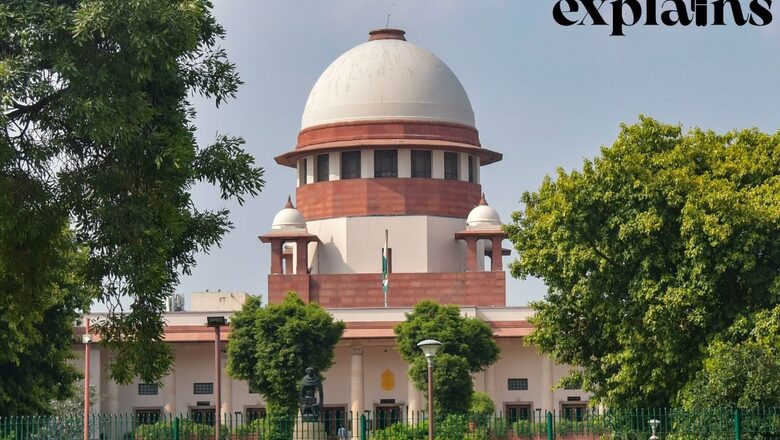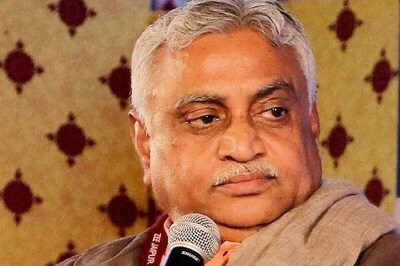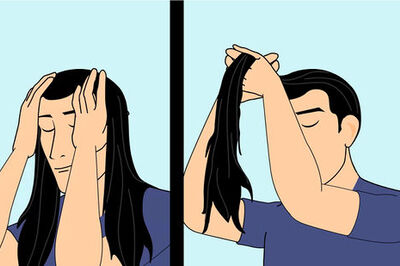
views
The Supreme Court has held that all Scheduled Castes (SC) and Scheduled Tribes (ST) may not be “homogenous”, while examining whether states can further sub-classify SCs and STs for reservation. The court referred to the 2004 judgment, which held that the SCs were “homogenous” group and there cannot be a sub-division among them.
The Centre, however, argued in court that it is in favour of sub-classification of the SCs and STs so that those who have been “discriminated” for so long can get equal opportunities in society.
Solicitor-general Tushar Mehta, who represents the government, told the seven-judge Constitution bench including Chief Justice DY Chandrachud and Justice BR Gavai, “If the aim of the State and the Constitution is to provide parity, equality of opportunity and social and economic mobility of the backward classes/ castes in need, enabling of sub-classification would ensure that benefits are extended to persons more in need of the said benefits by carefully apportioning the reserved quota within the reserved class. The rationalising of reservations through enabling sub-classification of quota for SCs/ STs would further the guarantee of social justice and further enable the State to penetrate into the lower segments within the backward classes.”
He added that the benefits of the sub-classification would ensure the “trickle-down effect” of reservations.
What Supreme Court said
The seven-bench constitution bench headed by CJI Chandrachud said, “There is homogeneity in the sense that each one of them belongs to the scheduled castes. But your argument is that there is no homogeneity either in terms of the sociological profile, economic development, social advancement, education advancement.
“There is heterogeneity in terms of past occupation… social status and other indicators may be different for different castes inside the Scheduled Castes. So, the degree of social and economic backwardness may vary from one person or caste to another.”
Major Aspects of Sub-Categorisation of SCs
Sub-categorisation means further division of a larger category into smaller, in this case, the Scheduled Castes and Scheduled Tribes, based on their socio-economic status and historical disadvantages.
The Madigas in Telangana, which constitutes 50% of SCs in the state, has not been able to access benefits for their community due to the dominance of Mala community. The Madigas have been struggling since 1994 for sub-categorisation of SCs. Their demand led to the formation of Justice P Ramachandra Raju Commission in 1996 and later a National Commission in 2007.
States such as Bihar, Punjab and Tamil Nadu have also tried for sub-categorisation of SCs but face legal hurdles.
The Constitution under Articles 341 and 342 grants powers to the President to notify SC and ST lists, however, there is no explicit prohibition against sub-categorisation.
The Union government had in 2005, with former Attorney General saying that sub-categorisation of SCs is possible if there was “unimpeachable evidence to indicate a necessity”.
But the Centre’s standpoint of amending Constitution was opposed by the National Commission for Scheduled Castes and Scheduled Tribes, stressing that the immediate need was to prioritise allocation of schemes and benefits to the communities.
2004 EV Chinnaiah vs state of Andhra Pradesh case
The 2004 verdict held that the states do not have the power to tinker with the Scheduled Caste list for grant of quotas. The Chinnaiah judgment held that any sub-classification of the Scheduled Castes would violate Article 14 (right to equality) of the Constitution.
The 2004 verdict also stated that only Parliament, and not state legislatures, can exclude castes deemed to be Scheduled Caste from the Presidential List under Article 341 of the Constitution.
The Indra Swahney judgment of 1992 provided that there can be sub-classification or exclusion of creamy layers to ensure that more backwards among the classes get the benefit of reservation. It capped quotas to 50%, and said the reservation cannot be applied in promotions.
Why Can’t Advanced Sub-Castes be Excluded from Quota?
Advocate General of Punjab Gurminder Singh said reservation cannot be seen as an act of benevolence by the entitled to the needy, it is the compensation for centuries of oppression of the needy. He pointed out the ‘heredity of caste’ as an issue, and spoke of caste-based occupations.
According to The Hindu, Justice BR Gavai spoke how some families get benefits of reservation as a result of people entering public services. “Once a person gets into IPS or IAS, his children do not suffer from the disadvantages of others from his group who live in a village… Yet his family will get the benefits of reservation for generations,” he said, as quoted by The Hindu.
Punjab Additional Advocate-General Shadan Farasat said sub-classification in caste was need to deepen the impact of reservation so that the benefits reached the backward groups. Justice Gavai, however, argued that by providing 50% reservation to backward classes, 50% of the general class is being excluded, as quoted by The Hindu.




















Comments
0 comment